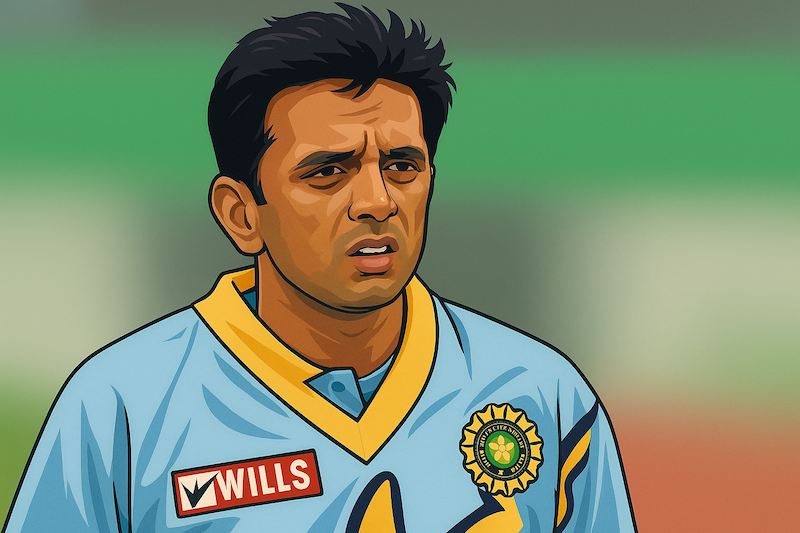
The Day Dhoni Announced Himself
When Mahendra Singh Dhoni walked into the Indian side in late 2004, he was more curiosity than certainty. A golden duck on debut and a string of low scores raised doubts if the long-haired wicketkeeper-batsman from Jharkhand truly belonged at the highest level. By April 2005, the pressure was immense. But against Pakistan at Visakhapatnam, in front of a roaring crowd, Dhoni’s story changed forever.
The Gamble at No. 3
With India already 1–0 up in the six-match series, the second ODI was a pressure game. When Sachin Tendulkar fell early, Sourav Ganguly made a bold call — promoting Dhoni to No. 3 for the first time. For a player yet to prove his worth, it was either going to be another failure or the spark India was waiting for.
A Powerplay Storm
Virender Sehwag’s 74 off 40 balls set the tone, but it was Dhoni who seized the day. With ferocious pulls, cross-batted slogs, and fearless drives, he dismantled Pakistan’s attack. Suddenly, the struggling newcomer looked like a natural showman, turning pressure into dominance and silencing his critics in a blaze of strokes.
Explore More Stories

Rahul Dravid: The Wall Who Carried India's Hopes
Calm at the crease and steady in crisis, Rahul Dravid was more than runs and records. From Eden Gardens to Adelaide, he became India’s trusted warrior — The Wall whose legacy of patience and discipline still inspires.

VVS Laxman: The Calm in India’s Storm
Grace, timing, and temperament — VVS Laxman turned pressure into poetry. From Kolkata 2001 to Adelaide 2003, his bat spoke the language of calm and class in Indian cricket’s greatest moments.
Building an Innings
Dhoni’s knock wasn’t just about raw power. After Sehwag’s dismissal, he built a crucial stand with Rahul Dravid, rotating strike and showing he could shape an innings across phases. From cameo to commanding presence, this was the performance that revealed he was more than just a slogger.
The Numbers That Spoke
By the end of his stay, Dhoni had smashed 148 off 123 balls, peppered with 15 fours and 4 sixes. It was the highest score by an Indian wicketkeeper in ODIs at the time, a record that turned him from a rookie on the brink into India’s newest match-winner. India’s total of 356/9 proved too much for Pakistan, sealing a 58-run win and a 2–0 series lead.
More Than a Century
What made this innings historic wasn’t just the runs — it was the message. Dhoni’s 148 redefined the role of a wicketkeeper in Indian cricket, elevating it from utility to match-winner. The tactical experiment of sending him at No. 3 also underlined a crucial truth: give power-hitters time and they can rewrite games.
The Aftershocks
Visakhapatnam wasn’t a one-off. Just months later, Dhoni struck 183 against Sri Lanka at Jaipur*, confirming this was not fleeting brilliance but the beginning of a white-ball career that would change India’s destiny. The Visakhapatnam 148 remains the ignition point of Dhoni’s legend — the innings that turned uncertainty into authority.
Why It Endures
Dhoni’s maiden century endures not just as a personal milestone, but as a turning point for Indian cricket. Without it, the path to World Cup-winning captain, the legendary “finisher,” and the cult of calm authority may never have existed in the same way. It was the day a future giant announced himself, and cricket in India has never been the same.




